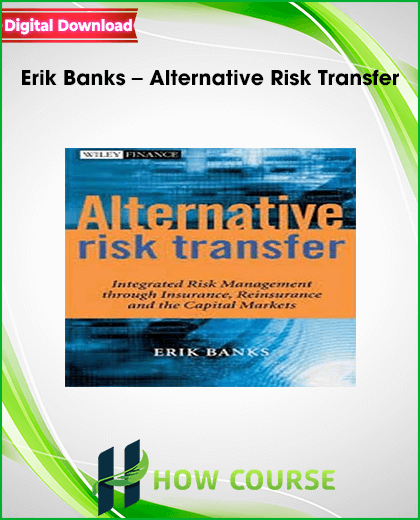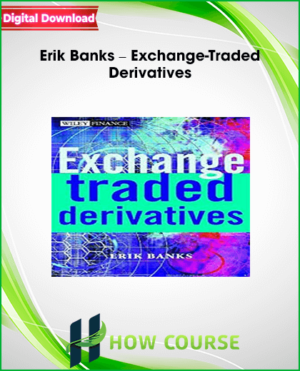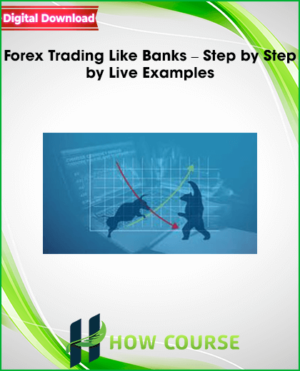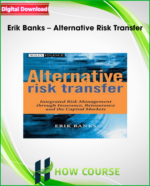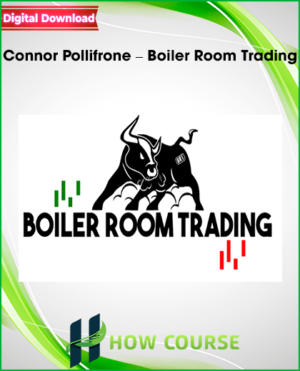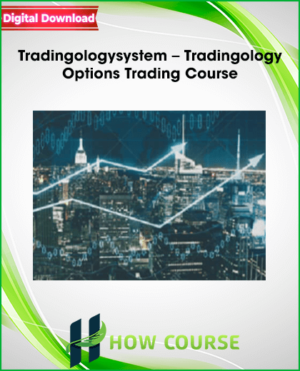Erik Banks – Alternative Risk Transfer
DESCRIPTIO
A practical approach to ART-an alternative method by which companies take on various types of risk
This comprehensive book shows readers what ART is, how it can be used to mitigate risk, and how certain instruments/structures associated with ART should be implemented. Through numerous examples and case studies, readers will learn what actually works and what doesn’t when using this technique.
Erik Banks (CT) joined XL Capital’s weather/energy risk management subsidiary, Element Re, as a Partner and Chief Risk Officer in 2001.
TABLE OF CONTENTS
Acknowledgements ix
Biography xi
PART I: RISK AND THE ART MARKET 1
1 Overview of Risk Management 3
1.1 Risk and return 3
1.2 Active risk management 5
1.2.1 Risk management processes 6
1.2.2 Risk management techniques 7
1.2.3 General risk management considerations 10
1.3 Risk concepts 12
1.3.1 Expected value and variance 12
1.3.2 Risk aversion 14
1.3.3 Risk transfer and the insurance mechanism 16
1.3.4 Diversification and risk pooling 17
1.3.5 Hedging 20
1.3.6 Moral hazard, adverse selection and basis risk 21
1.3.7 Non-insurance transfers 22
1.4 Outline of the book 22
2 Risk Management Drivers: Theoretical Motivations, Benefits, and Costs 25
2.1 Maximizing enterprise value 25
2.2 The decision framework 29
2.2.1 Replacement and abandonment 31
2.2.2 Costs and benefits of loss control 31
2.2.3 Costs and benefits of loss financing 32
2.2.4 Costs and benefits of risk reduction 35
2.3 Coping with market cycles 35
2.3.1 Insurance pricing 35
2.3.2 Hard versus soft markets 37
2.4 Accessing new risk capacity 42
2.5 Diversifying the credit risk of intermediaries 43
2.6 Managing enterprise risks intelligently 44
2.7 Reducing taxes 45
2.8 Overcoming regulatory barriers 46
2.9 Capitalizing on deregulation 47
3 The ART Market and its Participants 49
3.1 A definition of ART 49
3.2 Origins and background of ART 51
3.3 Market participants 52
3.3.1 Insurers and reinsurers 53
3.3.2 Investment, commercial, and universal banks 55
3.3.3 Corporate end-users 56
3.3.4 Investors/capital providers 57
3.3.5 Insurance agents and brokers 57
3.4 Product and market convergence 58
PART II: INSURANCE AND REINSURANCE 61
4 Primary Insurance/Reinsurance Contracts 63
4.1 Insurance concepts 63
4.2 Insurance and loss financing 64
4.3 Primary insurance contracts 65
4.3.1 Maximum risk transfer contracts 65
4.3.2 Minimal risk transfer contracts 66
4.3.3 Layered insurance coverage 76
4.4 Reinsurance and retrocession contracts 78
4.4.1 Facultative and treaty reinsurance 81
4.4.2 Quota share, surplus share, excess of loss, and reinsurance pools 81
4.4.3 Finite reinsurance 86
5 Captives 89
5.1 Using captives to retain risks 89
5.1.1 Background and function 89
5.1.2 Benefits and costs 91
5.2 Forms of captives 94
5.2.1 Pure captives 94
5.2.2 Sister captives 95
5.2.3 Group captives 95
5.2.4 Rent-a-captives and protected cell companies 96
5.2.5 Risk retention groups 99
5.3 Tax consequences 100
6 Multi-risk Products 103
6.1 Multiple peril products 103
6.2 Multiple trigger products 106
PART III: CAPITAL MARKETS 113
7 Capital Markets Issues and Securitization 115
7.1 Overview of securitization 115
7.2 Insurance-linked securities 116
7.2.1 Overview 116
7.2.2 Costs and benefits 118
7.3 Structural features 119
7.3.1 Issuing vehicles 119
7.3.2 Triggers 121
7.3.3 Tranches 123
7.4 Catastrophe bonds 124
7.4.1 Hurricane 124
7.4.2 Earthquake 127
7.4.3 Windstorm 129
7.4.4 Multiple cat peril ILS and peril by tranche ILS 129
7.4.5 Bond/derivative variations 130
7.5 Other insurance-linked securities 131
8 Contingent Capital Structures 135
8.1 Creating post-loss financing products 135
8.2 Contingent debt 139
8.2.1 Committed capital facilities 139
8.2.2 Contingent surplus notes 140
8.2.3 Contingency loans 141
8.2.4 Financial guarantees 142
8.3 Contingent equity 142
8.3.1 Loss equity puts 143
8.3.2 Put protected equity 146
9 Insurance Derivatives 149
9.1 Derivatives and ART 149
9.2 General characteristics of derivatives 150
9.3 Exchange-traded insurance derivatives 156
9.3.1 Exchange-traded catastrophe derivatives 156
9.3.2 Exchange-traded temperature derivatives 157
9.4 OTC insurance derivatives 162
9.4.1 Catastrophe reinsurance swaps 162
9.4.2 Pure catastrophe swaps 164
9.4.3 Temperature derivatives 164
9.4.4 Other weather derivatives 166
9.4.5 Credit derivatives 167
9.5 Bermuda transformers and capital markets subsidiaries 168
PART IV: ART OF THE FUTURE 171
10 Enterprise Risk Management 173
10.1 Combining risks 173
10.1.1 The enterprise risk management concept 173
10.1.2 Costs and benefits 177
10.2 Developing an enterprise risk management program 179
10.2.1 Strategic and governance considerations 180
10.2.2 Program blueprint 182
10.2.3 Program costs 186
10.3 End-user demand 188
11 Prospects for Growth 193
11.1 Drivers of growth 193
11.2 Barriers to growth 194
11.3 Market segments 196
11.3.1 Finite structures 196
11.3.2 Captives 197
11.3.3 Multi-risk products 197
11.3.4 Capital markets issues 198
11.3.5 Contingent capital 198
11.3.6 Insurance derivatives 199
11.3.7 Enterprise risk management 199
11.4 End-user profiles 201
11.5 Future convergence 202
Glossary 205
Selected References 221
Index 223
AUTHOR INFORMATION
ERIK BANKS has held senior risk management positions at several global financial institutions, including XL Capital, where he was Partner and Chief Risk Officer of the Bermuda reinsurer’s derivative subsidiary, and Merrill Lynch, where he spent 13 years managing credit and market risk teams in Tokyo, Hong Kong, London and New York. Mr. Banks has written various books on risk management, emerging markets, derivatives, merchant banking, and electronic finance.
> Please contact our team if you have questions, or broken links via our email [email protected].

